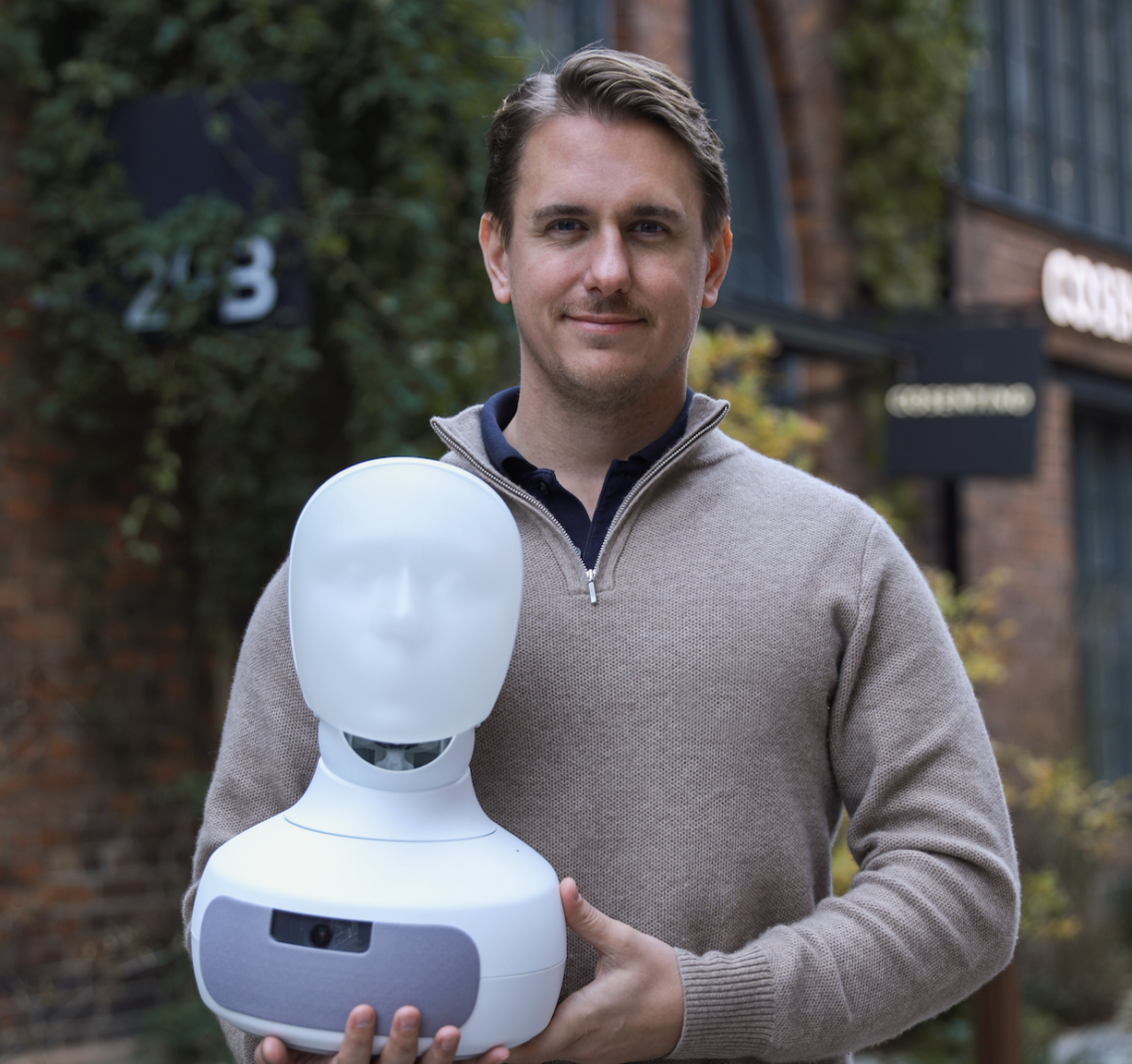In 2019 The World Economic Forum named social robotics as one of the 10 top emerging technologies that has the potential to alter established ways of living and provide major benefits to societies and economies. If Furhat Robotics, a spin-out of KTH Innovation, the innovation arm of Sweden’s Royal Institute of Technology, has its way that prediction will become true sooner rather than later.
Global pharmaceutical company Merck is piloting a pre-screening medical application with one of Furhat’s robots. Germany’s Deutsche Bahn has field tested one of the company’s robots use as a multilingual travel concierge at Frankfurt Airport and in train stations in Japan and Germany. Microsoft is using the robot on its platform to demonstrate how customers can connect with OpenAI. The organizers of an exhibition in Saudi Arabia used Furhat robots to conduct a visitor survey, collecting some 30,000 responses. “It is very hard to get people to take a survey, but people were standing in line to respond because they found the robot entertaining,” says Viktor Lundberg, Furhat’s Head of Marketing. “It was something different and also very intuitive.”
Furhat grew out of a research project at KTH. The co-founders – Samer Al Moubayed, Gabriel Skantze, Jonas Beskow and Preben Wik – are researchers. Two are part time professors at the university. “The whole idea was how far can we go to recreate human interaction,” says Lundberg.
The Swedish scale-up has come a long way in the ten years since the company was launched. The inspiration for the company’s name stems from an early prototype when the robot still had multiple wires sticking out of its head. A team member decided to mask that by outfitting the robot’s head with a fur hat.
The company says it was the first on the market with robots that have “back-projected faces” that can change skin color, placement of eyebrows, the amount of makeup, male or female characteristics, size of eyes or lips etc. at the click of a mouse. Such animated projection allows for smoother facial movements as opposed to mechatronic designs. Furhat says this helps its robots avoid what is known as the Uncanny Valley effect that most people feel when seeing a robot that appears almost lifelike, but fails to mimic a realistic human. Furhat’s ‘brain’ is powered by a custom state-of-the-art conversational intelligence software. The Furhat Software includes an Software Development Kit (SDK) which can be used to program the robot to participate in social human interactions. Furhat’s robots participate in a conversation through natural movements such as nodding, headshaking and raising eyebrows, and are equipped with an advanced conversational system, cutting-edge speech recognition and automatic lip sync with 40+ languages, making their human-like conversation seem more real.
The introduction of large language models (LLMs) is amplifying those abilities, says Lundberg. “Up until last year, when LLMs became more available, all interactions in Furhat robots had to be preprogrammed: if a person says this, say this,” says Lundberg. “Now everything is changed.” A month ago, Furhat did an experiment in which they asked children and seniors with no computing background to program Furhat robots in two hours. “They created all kinds of interesting characters,” he says. “With the help of AI, you can create any kind of character, personality and have them speak in any language in a short time. It opens up a lot of use cases. Now you could bring a robot into a company, and they could, by themselves, test something within a few weeks to understand how they could use it,” he says. “Speed makes all the difference here, that and how easy it is to use now, compared to before.”

Furhat says the benefits of using the robots in an enterprise include:
- Reducing the need for physical contact, while still allowing for a human-like and rich experience.
- Adding to services offered through more languages, increased service hours or personalized experiences.
- Providing the ability to speak with multiple people simultaneously, something which other forms of technology are not capable of doing.
- Emboding a company’s brand in locations where staff cannot be present.
- Reducing cost over time: a robot will run 24/7 without breaks, vacation or need for more stimulating tasks leaving humans to take on more interesting and creative tasks
- Providing a less intimidating interaction for people with social disorders, such as autism or social anxiety.
- Removing human bias from certain decision-making tasks
- Maintaining attention and increasing engagement levels in conversations and activities.
Furhat, which has raised about $10 million dollars, says it doesn’t have any direct competitors. While other robotic companies, such as France’s Enchanted Tools, make humanoid robots, the focus is not the same. “We focus only on interactions with humans and replicating what humans do when we communicate,” says Lundberg. “One challenge that we have is that until people interact directly with our robots it is very hard to convey how big a difference our product can make.”
To access more of The Innovator’s Interview Of The Week stories click here.







